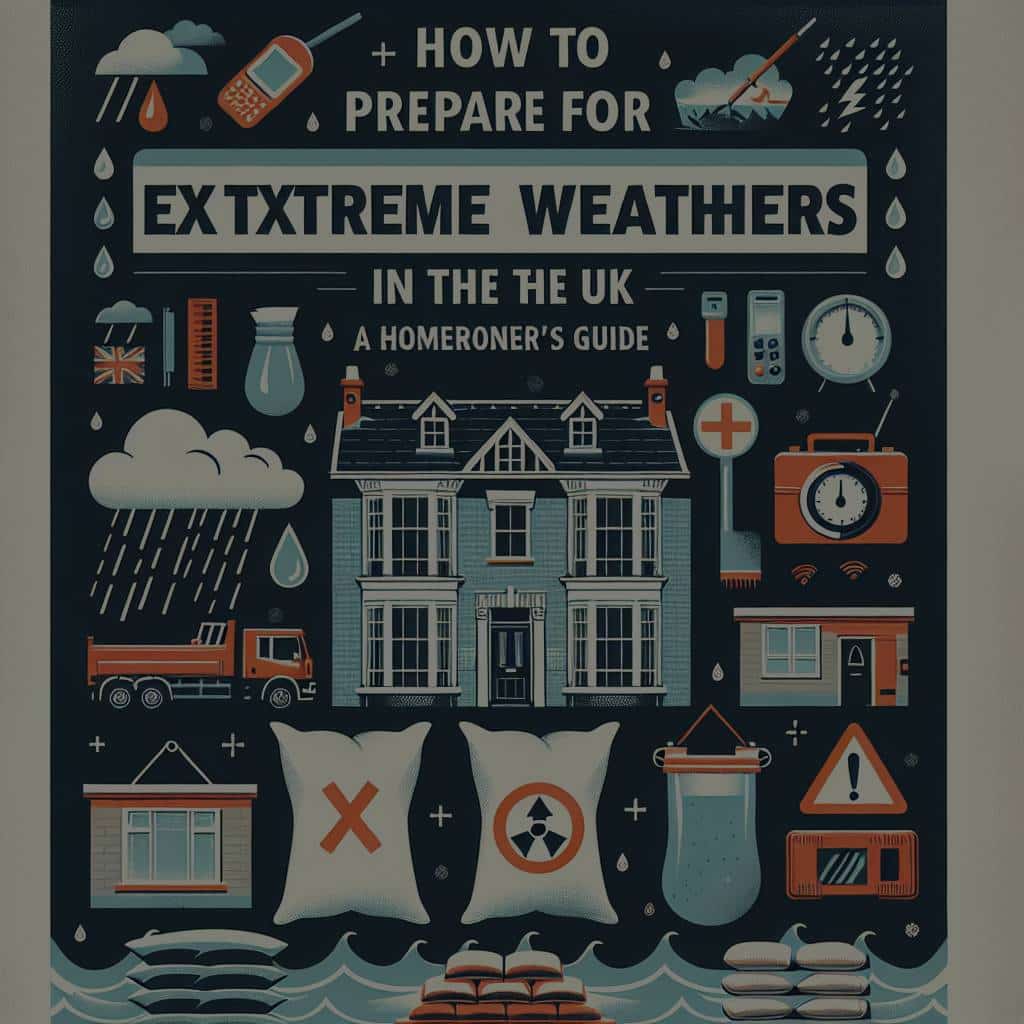How to Prepare for Extreme Weather Events in the UK: A Homeowner’s Guide?

In the UK, the increase in extreme weather events such as storms and flooding poses a significant risk to homeowners. While we cannot control the weather, we can certainly take steps to ensure that our properties are well-prepared to withstand the brunt. This guide will delve into the precautions that you, as homeowners, can take to protect your property from the damaging effects of extreme weather events.
Understanding the Risks
Before you start implementing any preventive measures, it’s essential to understand the specific risks that your property may be exposed to. Extreme weather events can manifest in various forms such as floods, storms, and extreme winter conditions. Each of these poses a different set of risks and therefore, require different preparation actions.
Also to see : What Are the Trends in Upcycling and Repurposing in UK’s Fashion Industry?
Flood Risks
Floods are arguably one of the most destructive forms of extreme weather events. They not only cause damage to the structure of your property but also pose a serious risk to human life. It’s crucial that you assess the risk of flooding in your local area. You can do this by checking with your local authority or the Environment Agency’s flood risk assessment tool.
Once you understand the risk, you can then take necessary measures to protect your property. These could include installing flood barriers, raising electrical sockets, and sealing doors and windows. Insurance is also a key consideration, and you should check whether your existing policy covers flood damage. If it doesn’t, you may want to consider taking out additional coverage.
Have you seen this : What Are the Applications of Brain-Computer Interfaces in UK Healthcare?
Storm Risks
Storms, particularly those accompanied by strong winds, can cause significant damage to properties. They can bring down trees, damage roofs, and cause power outages. To prepare for storms, you should regularly check and maintain the exterior of your property, including the roof and gutters.
It’s also important to have a plan in place in case of a power outage. This could involve investing in a generator or having a supply of candles and torches on hand. Again, it’s important to check whether your insurance policy covers storm damage.
Winter Risks
Extreme winter conditions, including heavy snowfall and freezing temperatures, can also pose a risk to properties. They can cause pipes to freeze and burst, lead to ice damming on the roof, and make driveways and walkways dangerously slippery. To prepare for winter conditions, you should ensure that your heating system is in good working order and that your home is adequately insulated.
Creating an Emergency Plan
Having an emergency plan can help you deal with extreme weather events more effectively. It should include information on safe locations within your home, emergency contact numbers, and a list of essential items to have on hand, such as food, water, and medication.
Building a Community Response
Extreme weather events can affect entire communities, and a coordinated community response can be of great help in such situations. This could involve setting up a neighbourhood watch scheme, coordinating efforts to clear snow or debris, or establishing a designated emergency shelter.
Stay Informed
Staying informed about weather forecasts and warnings can give you valuable time to prepare and protect your property. Whether it’s through the Met Office’s weather app, local news outlets, or social media, keeping up to date with the latest weather information is critical.
In summary, while extreme weather events can be unpredictable and damaging, there are many steps you can take to protect your property and ensure your safety. By understanding the risks, creating an emergency plan, building a community response, and staying informed, you can significantly reduce the impact of these events on your home.
Being Proactive: Property Flood Resilience and Recovery
The key to managing a flood risk is to be proactive. This means acting before the forecast predicts a deluge, and not just when the water begins to rise. The first step is to always be aware of your local flood risk. This information is available from the Environment Agency and your local council, who provide maps and statistical data on areas prone to flooding.
Your insurance company should be your next point of contact. Confirm whether your policy covers flood damage. If it doesn’t, you may need to get additional coverage, especially if your property is in a high-risk flooding area.
Building flood resilience into your property is another crucial step. This involves modifying your home to reduce the damage caused by floods. For example, you could raise electrical sockets and switches, service panels, wiring, and appliances to at least a foot above the expected flood level in your area. Using flood-resistant materials for walls, floors, and for items that can’t be raised or relocated can also reduce repair costs.
Installing barriers like flood doors, windows doors, and air brick covers can prevent floodwater from entering your home. These types of measures are commonly referred to as ‘resistance’ measures. The Environment Agency provides a range of solutions, from simple and relatively cheap to more complex and expensive.
Flood recovery is the last step and includes everything from restoring your property after a flood to dealing with insurance claims and salvaging property. It’s a good idea to have a flood kit prepared in case of an emergency. It should include copies of important documents like insurance policies, a battery-operated torch and radio, medication, warm clothing, and bottled water.
Remember, being proactive and implementing flood resilience measures can protect your property and significantly reduce the devastating effects of flood damage.
Developing a Localised Response: Leading in Your Community
Extreme weather events don’t just affect individual homeowners; they impact whole communities. Consequently, a localised response is necessary. As a homeowner, you can spearhead this initiative. Getting involved in your community, leading the local response, and helping neighbours prepare can make a significant difference.
Start by setting up a neighbourhood watch scheme that focuses on weather events. This could involve keeping an eye out for severe weather warnings, sharing this information with your neighbours, and helping each other prepare.
You could also reach out to your local council and lead local efforts to develop a community-wide flood plan. This would involve identifying high-risk areas, planning evacuation routes, and coordinating with the local council and emergency services. You could also organise community workshops on topics like property flood resilience or preparing a flood kit.
Clearing snow or debris after a storm, or establishing a designated emergency shelter, is also part of a community response. It’s about everyone working together to recover and rebuild after an extreme weather event.
Remember, communication is crucial in such situations. Whether it’s through a community newsletter, social media groups, or local meetings, keep everyone informed and encourage everyone in the community to get involved.
Conclusion
Preparing for extreme weather events in the UK can seem daunting. However, by understanding the risks, being proactive in protecting your property, developing an emergency plan, leading in your community, and staying informed, you can minimise the impact of these events.
Remember, extreme weather events like floods, storms, and winter conditions are a reality we face. But it’s how we prepare and respond that makes all the difference. By following the guidance provided in this guide, you can play your part in safeguarding your property and your community from the damaging effects of extreme weather.
